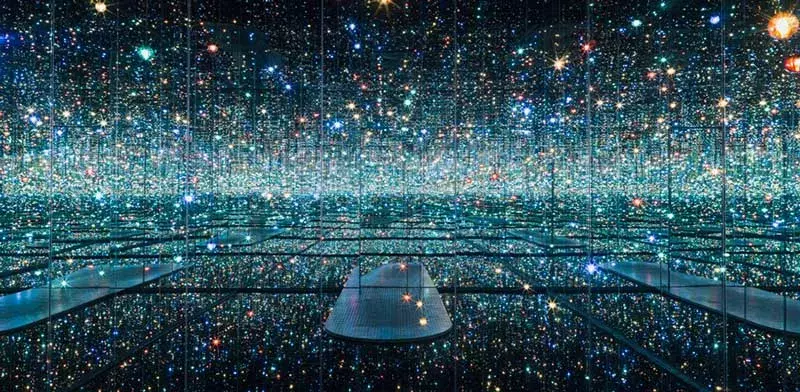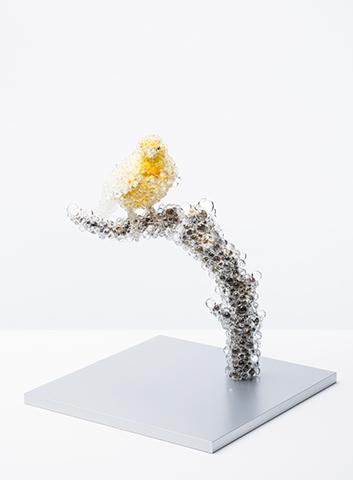
In recent years, Japanese contemporary artists like Yayoi Kusama and Takashi Murakami have become household names, with widely popular exhibitions around the world (including L.A.'s MOCA and the Broad Museum) and designer handbag collaborations with Louis Vuitton. Other stars like Yoko Ono, Yoshitomo Nara, and photographer Nobuyoshi Araki also have instantly recognizable styles and fetch huge prices at international auction houses. They're only a few examples of the Japanese contemporary art scene, which is as dynamic as it is diverse.Japan's art history spans several thousand years, but the roots of "contemporary art" can be traced back to the nation's first opening to the West in the Meiji Era (1870s). The next half century saw not only Western Art make a renewed and lasting impression on Japan, but moreover, the influence of Japanese artists began to stretch across the globe. After the end of World War II, Tokyo went through vast changes and the city became a fertile ground for bold experimental movements like the Gutai group, Hi Red Center, and the later Mono-ha. These groups blurred the lines between art, everyday life, and political action, and had exchange with other international movements like Fluxus in New York (of which Yoko Ono and Yayoi Kusama were key contributors). Other forms of Western minimalist and conceptual art in the 1960s and 1970s took major inspiration from classical Japanese art, design and philosophy, particularly Zen Buddhism.
As Japan became an economic giant in the 1980s, there was increasing crossover between contemporary art and other disciplines like photography, music, anime, fashion, design, and technology. Out of this emerged a new generation of artists who were blending "fine art" and "pop culture", like Yoshitomo Nara, whose work is deeply influenced by the manga comics of his youth, Mariko Mori, who combines science fiction with spiritual journeys, and Ryoji Ikeda, whose electronic music and videos fit just as well at a nightclub as at a major museum. And then of course, there's Takashi Murakami, who has combined art and pop better than any artist since Andy Warhol.
Murakami's ground-breaking "Superflat" exhibition toured the world in 2001, sharing his theory that Japanese visual culture has been marked by a unique style of "flatness" from anime (learn more about Japanese animation in our article here) all the way back to 17th century woodblock prints. He also helped establish the careers of an entire wave of artists who combined kawaii ("cute") playfulness with social critique, like Aya Takano and Chiho Aoshima. Like most of the international art world, the Japanese scene today is quite eclectic. But one can see a fresh testament to Japanese tradition appearing in many artists' work, even if "remixed" with contemporary techniques and topics in surprising ways.

Kohei Nawa, PixCell-Canary #5, 2017
Kohei Nawa, for example, the multidisciplinary artist (and designer of the 2nd Floor of Japan House Los Angeles), harks back to centuries of nature portraiture by rendering animals like deer, wolves and tigers through complex computer models and 3D printing. Chiharu Shiota (who represented Japan at the 2015 Venice Biennale) creates breathtaking room-sized installations tied together with thread, highlighting an interconnected environment and the hidden lives of everyday objects.
In the fall of 2017, the wildly popular new media collective teamLab plans to illuminate an entire forest in Tokiwa Park (Ube city, Yamaguchi Prefecture), with interactive sensors that will make trees "breathe" in response to viewers passing by. This project connects to the ancient Japanese practices of nature-viewing – from hanami (cherry blossom viewing) to shinrin-yoku ("forest bathing"). It also echoes an event that took place in another forest in Japan, 61 years ago. In June of 1956, the Gutai Group staged an art show in Ashiya Pine Forest (Hyōgo Prefecture), effectively kicking off Japan's contemporary art era.
Though the technology may change, it seems that Japanese art's creative spin on tradition has deep roots, and will continue to grow.

